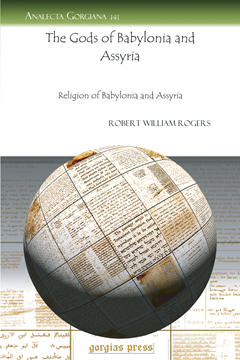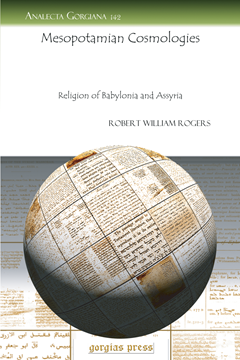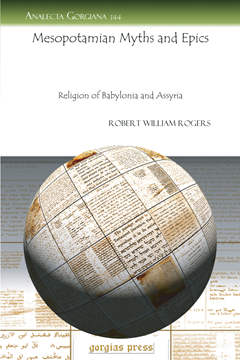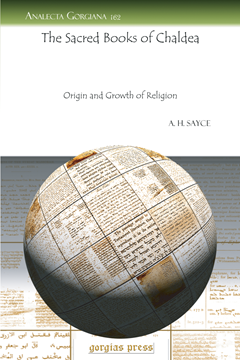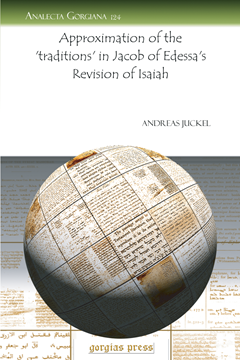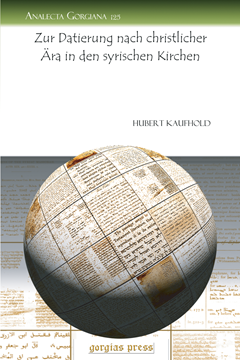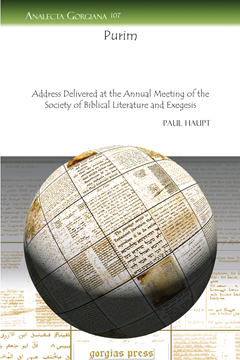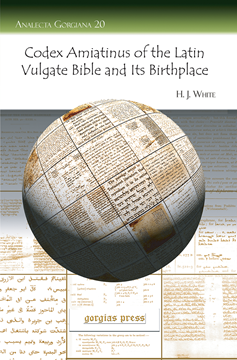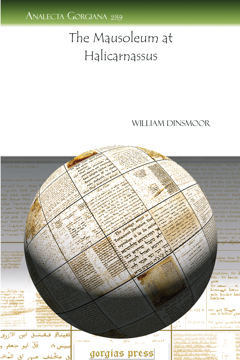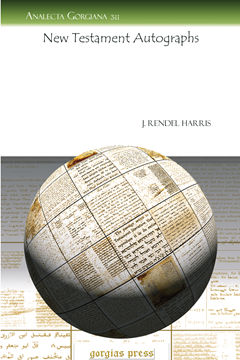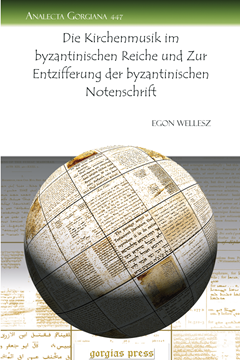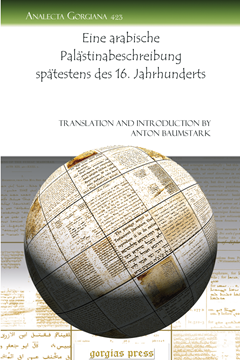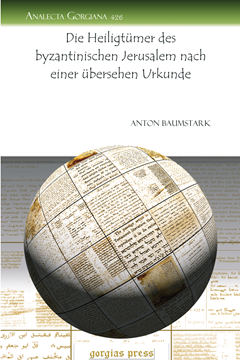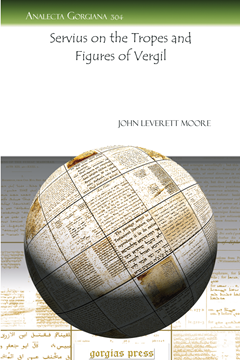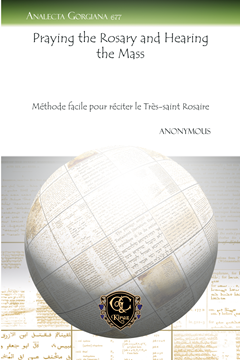Analecta Gorgiana
Analecta Gorgiana is a collection of long essays and short monographs which are consistently cited by modern scholars but previously difficult to find because of their original appearance in obscure publications. Carefully selected by a team of scholars based on their relevance to modern scholarship, these essays can now be fully utilized by scholars and proudly owned by libraries.
The Gods of Babylonia and Assyria
Religion of Babylonia and Assyria
Series: Analecta Gorgiana 141
ISBN: 978-1-60724-107-2
Originally the second in a series of five lectures delivered at Harvard University, this extract is an early attempt to tackle a formidable subject: the religion of ancient Iraq, or Mesopotamia. Rogers introduces the reader to Sumer and Babylonia, noting the early kings and their deities. This essay then engages in an historical rendering of the gods of the dominant cities of Babylonia and Assyria. Engaging and informative, Rogers’ narrative is accessible to the specialist and general reader alike.
$43.00 (USD) $25.80 (USD)
Mesopotamian Cosmologies
Religion of Babylonia and Assyria
Series: Analecta Gorgiana 142
ISBN: 978-1-60724-108-9
Originally the third in a series of five lectures delivered at Harvard University, this extract is an early attempt to tackle a formidable subject: the religion of ancient Iraq, or Mesopotamia. In this essay Rogers considers the great cosmologies of ancient Mesopotamia. In an easy narrative style, he recounts the discovery of the Enuma Elish and providing a brief summary of its contents. He makes a comparison of this cosmology with those of Genesis, demonstrating the interconnectedness of the ancient world of western Asia. Engaging and informative, Rogers’ narrative is accessible to the specialist and general reader alike.
$43.00 (USD) $25.80 (USD)
Mesopotamian Myths and Epics
Religion of Babylonia and Assyria
Series: Analecta Gorgiana 144
ISBN: 978-1-60724-110-2
Originally the fifth in a series of five lectures delivered at Harvard University, this extract is an early attempt to tackle a formidable subject: the religion of ancient Iraq, or Mesopotamia. In this last essay of the set, Rogers focus on the mythic tradition of Mesopotamia, discussing the myths of Adapa, Ishtar’s descent to the netherworld, and the Gilgamesh epic, especially concentrating on the deluge account. Engaging and informative, Rogers’ narrative is accessible to the specialist and general reader alike.
$43.00 (USD) $25.80 (USD)
The Sacred Books of Chaldea
Origin and Growth of Religion
By A. H. Sayce
Series: Analecta Gorgiana 162
ISBN: 978-1-60724-177-5
This fifth extract from Sayce’s Origin and Growth of Religion, the topic turns to the “sacred books” of the Babylonians. Beginning with the “Chaldean Rig-Veda,” collections of hymns identified from the earliest days of Assyriology, Sayce also considers the earlier, less developed magical texts. Future considerations – sin, the status of heaven and Hades, and cosmology finish out the essay.
$43.00 (USD) $25.80 (USD)
Approximation of the ‘traditions’ in Jacob of Edessa’s Revision of Isaiah
Series: Analecta Gorgiana 124
ISBN: 978-1-60724-036-5
This article contributes to the knowledge of Jacob of Edessa’s (d. 708) Old Testament revision by editing twenty texts (a total of 80 verses) from the Book of Isaiah and comparing them with the Greek recensions of the Septuagint, with the Peshitta, and the Syrohexapla. Two special features are introduced to set out Jacob’s revision technique in some detail: 1. comparison with an earlier undeveloped stage of Jacob’s revision extant in Ms Add 17,134 of the British Library; and 2. the distinction (by different colours and fonts) of the ‘traditions’ involved in the definite stage of his revision. Both features point to the emphasis given to the Peshitta in translating the substantial Greek text of the Old Testament.
$43.00 (USD) $25.80 (USD)
Zur Datierung nach christlicher Ära in den syrischen Kirchen
Series: Analecta Gorgiana 125
ISBN: 978-1-60724-038-9
The Christian era in Syriac and Arabic sources does not always correspond with the western calculations. Until quite recently the members of the Syriac churches used the era of the Seleucids (of Alexander the Great; East and West Syrians) as the era of the creation of Adam (Melkites). The use of the Christian era became more common from the 16th century, due to the closer contacts between the Oriental and the Latin churches.
$43.00 (USD) $25.80 (USD)
Purim
Address Delivered at the Annual Meeting of the Society of Biblical Literature and Exegesis
By Paul Haupt
Series: Analecta Gorgiana 107
ISBN: 978-1-60724-033-4
Approaching the question of Purim historically, Haupt notes that the book of Esther was composed during the reign of Judas Maccabeus, and he correlates the festival to the Babylonian New Year. He discusses the origin of the title “purim” from various languages, ultimately deciding on the Old Persian explanation. Moving forward, Haupt brings the festival into the more modern period, showing how the ancient tradition continues to exist. A useful resource for anyone interested in turn-of-the-century thought on the origins of an enigmatic biblical festival, this contribution is both readable to the layperson and scholarly as well.
$44.00 (USD) $26.40 (USD)
The Origin of the Modern Syrian
Series: Analecta Gorgiana 39
ISBN: 978-1-59333-693-6
An extremely provocative text, Bishara pleads the case of the Arab-American to be seen and treated as equal members of American society. An insightful peek into Arab-American self-identity around the turn of the 20th century, Bishara’s essay is of interest to ethnographer and historian alike.
$44.00 (USD) $26.40 (USD)
The Day and Year of Saint Polycarp’s Martyrdom
By C. H. Turner
Series: Analecta Gorgiana 19
ISBN: 1-59333-497-4
Among the most important chronological questions of Christianity in the second century is the date of St. Polycarp’s martyrdom. Turner scours the evidence to determine a precise date, based on comparison between the Roman and Asiatic calendars and other historical references. This dating in turn helps to date Irenaeus and St. John.
$44.00 (USD) $26.40 (USD)
Codex Amiatinus of the Latin Vulgate Bible and Its Birthplace
By H. J. White
Series: Analecta Gorgiana 20
ISBN: 1-59333-498-2
White takes the reader through a historical puzzle revolving around the date of the Vulgate manuscript Codex Amiatinus. He demonstrates that the manuscript falls in the eighth century and traces its origins to Italy.
$44.00 (USD) $26.40 (USD)
The Place of the Peshitto Version in the Apparatus Criticus of the Greek New Testament
Series: Analecta Gorgiana 4
ISBN: 1-59333-472-9
This essay by Gwilliam explores the vital role of the Syriac Peshitta for textual criticism of the New Testament. While maintaining the priority of the Greek, Gwilliam explores connections and disagreements between the Syriac and the traditional text. An apology for the Peshitto and problems associated with it are openly discussed.
$44.00 (USD) $26.40 (USD)
Constantine and Athanasius
Lectures on the History of the Eastern Church
Series: Analecta Gorgiana 166
ISBN: 978-1-60724-181-2
Extracted from Arthur Penrhyn Stanley’s Lectures on the History of the Eastern Church, this set of lectures examines two of the most famous participants of the Council of Nicea, the Emperor Constantine and Saint Athanasius. Together these two figures largely define the Council of Nicea, and their portraits are vividly portrayed here by an eminent church historian.
$44.00 (USD) $26.40 (USD)
Notes on Byzantine Art and Culture in Italy and Especially in Rome
Series: Analecta Gorgiana 255
ISBN: 978-1-60724-484-4
A. J. Frothingham discusses Byzantine influences in the art and architecture of medieval Rome, bringing to light the influence of Byzantium on Italy beyond the fall of the Western empire.
$44.00 (USD) $26.40 (USD)
Greek Inscriptions from Corinth II
Series: Analecta Gorgiana 219
ISBN: 978-1-60724-448-6
This paper presents the very few surviving inscriptions from this period before Mummius' sack of Corinth and includes some of the few Greek decrees known at the time of the writing of the paper.
$44.00 (USD) $26.40 (USD)
The Mausoleum at Halicarnassus
Series: Analecta Gorgiana 289
ISBN: 978-1-60724-518-6
Dinsmoor suggests a reconstruction of the fragmented Mausoleum of Halicarnassus, one of the wonders of the ancient world and a model for several modern monuments.
$44.00 (USD) $26.40 (USD)
New Testament Autographs
Series: Analecta Gorgiana 311
ISBN: 978-1-60724-543-8
James Rendel Harris uses known statistics of ancient autographs (that is, the original version of a written document) to posit the general appearance of the epistles in their original form.
$44.00 (USD) $26.40 (USD)
Die Kirchenmusik im byzantinischen Reiche und Zur Entzifferung der byzantinischen Notenschrift
By Egon Wellesz
Series: Analecta Gorgiana 447
ISBN: 978-1-60724-855-2
Egon Wellesz presents here an in-depth survey of Christian music in the Byzantine tradition. Wellesz discusses the present state of research and the problems inherent in such a survey, and describes the notation and symbols used in the manuscript tradition.
$44.00 (USD) $26.40 (USD)
Eine arabische Palästinabeschreibung spätestens des 16. Jahrhunderts
Translation and Introduction by Anton Baumstark
Series: Analecta Gorgiana 423
ISBN: 978-1-60724-714-2
Descriptions of the Holy Lands abound, yet each offers a unique perspective. Anton Baumstark publishes here an Arabic version of one such description accompanied by a brief introduction to the text and a Latin translation.
$44.00 (USD) $26.40 (USD)
Die Heiligtümer des byzantinischen Jerusalem nach einer übersehen Urkunde
Series: Analecta Gorgiana 426
ISBN: 978-1-60724-732-6
Anton Baumstark compares the description of various holy sites in Jerusalem from the Byzantine age in a neglected source—a tenth-century Typikon of Anastasis—with the descriptions found in other ancient texts.
$44.00 (USD) $26.40 (USD)
Der Katholikos Timotheos I und seine Briefe
Translation and Introduction by Oskar Braun
Series: Analecta Gorgiana 412
ISBN: 978-1-60724-689-3
Oskar Braun provides a brief introduction to the life and career of Patriarch Timothy I, including a list of his writings with special attention to his letters and the Syriac text and German translation for five of Timothy’s letters.
$44.00 (USD) $26.40 (USD)
The Saturnian Metre
Series: Analecta Gorgiana 337
ISBN: 978-1-60724-591-9
Wallace Martin Lindsay addresses the still unresolved problem of Saturnian meter in early Latin poetry, presenting the case for the accent-based meter over the quantitative.
$44.00 (USD) $26.40 (USD)
Servius on the Tropes and Figures of Vergil
Series: Analecta Gorgiana 304
ISBN: 978-1-60724-566-7
John Leverett Moore, in this doctoral thesis for Johns Hopkins University, examines the methods by which Servius organized his commentary on Virgil.
$44.00 (USD) $26.40 (USD)
Conference upon Missionary Work for the Mohammedans
Compiled by Foreign Missions Conference of North America
Series: Analecta Gorgiana 533
ISBN: 978-1-61719-207-4
This volume contains proceedings of a conference on whether and how to attempt to convert the Muslim world to Christianity, held during the First Balkan War
$44.00 (USD) $26.40 (USD)
Zur Textgeschichte der Civitas Dei Augustins
seit dem Entstehen der ersten Drucke
Series: Analecta Gorgiana 561
ISBN: 978-1-61719-304-0
Textual analysis and source criticism of the printed texts of Augustine’s City of God.
$44.00 (USD) $26.40 (USD)
Praying the Rosary and Hearing the Mass
Méthode facile pour réciter le Très-saint Rosaire
By Anonymous
Series: Analecta Gorgiana 677
ISBN: 978-1-61719-628-7
This manual, in Arabic and originally published at the Dominican Press in Mosul, contains the complete cycle of praying the Rosary, together with a guide for hearing the Mass.
$45.00 (USD) $27.00 (USD)

